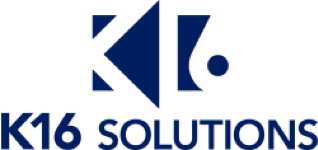How EdTech Needs to Change – A Note from K16’s CEO
I have started and stopped writing this message many times before because it is, as usual, from my experience and from my heart. There is so much I want to change not only in the EdTech world, but in the world of academics and business.
Let me begin with what I consider to be the most important, big-picture lessons.
Remember our purpose
First, we must remember our purpose. The purpose for EdTech is to improve learning and, in turn, to improve the world. Perhaps EdTech companies are feeling the pressure to perform for stakeholders. All too often, bowing to that pressure interferes with their true mission. The purpose behind serving in education in any capacity, let alone education technology, is to put students and staff at the center of our decisions.
If you are creating new technology to make money or to become a celebrity founder, education is the wrong industry for you.
Throughout my career, I have always believed in a “no jerk”, “no ego” policy. That policy stands at our company today. I spent a long and impressionable time as a young, academic manager working for a couple of bosses who would stand at the top of any list showcasing exactly how not to be an effective leader.
Jerks and egos have no place in business leadership, and even less so in the noble world of education. I will never understand any spreadsheet, career ego, department politics, or other such nonsense getting in the way of the student experience. I evolved quickly to learn that the staff experience must also be at the center of our decisions; otherwise, we risk negatively impacting the student’s learning journey.
Have you ever heard the phrase, “A fish rots from the head down”? Bad leaders can make a business crumble. It was insecure leaders who taught me exactly what not to do in business—that kind of insecure, greedy, boss-people-around kind of leadership only serves to create negative experiences for employees, and it is a special contradiction of how leaders should behave in the education industry.
Do you know what your company’s purpose or goal is?
For example, K16 Solutions was formed by educators creating technology for fellow educators. In everything we do, we want to make the lives of our fellow educators and their students easier.
On a bigger scale, we want to help make education more accessible for all and reduce operational budgets, and we know technology is key to this progress. My team and I were true pioneers of distance education, then online education, then blended learning long before institutions became believers in the value of reaching their students outside the traditional classroom.
Of course, each business must make money. Still, that can’t be the primary goal but a lovely byproduct of their primary goal. I would encourage companies in all industries to identify their greater purpose and to remember it in everything they do. This is perhaps the most essential change that our industry needs to keep students and staff at the center of all decisions.
Empower, not imprison, customers
Throughout our careers, my colleagues and I clearly saw that institutions were imprisoned by their legacy LMS. The only way to move from one to another was a highly laborious process of sitting two computers next to each other and copying and pasting all course content bit by bit. Or, even worse, have a company outsource this process for you.
I experienced four of these manual LMS migrations in my career, each one more frustrating than the last. Teachers had to spend ridiculous amounts of time “off subject,” copying and pasting their course content from one platform to the other. Many worked countless weekend hours to get it done. And they were told it is a way to refresh their courses, a nice sales pitch benefiting someone but never the staff.
During that awkward, in-between period of migration, students often had to switch back and forth between the new and old system, which was confusing for everyone. Both faculty and students hated the process, and I hated watching them struggle with no real way to solve their problems.
These migrations took countless hours of repetitive work and cost each institution hundreds of thousands of dollars and often took years to complete. It made institutions feel trapped in their current LMS. How could they afford to migrate and what was the benefit of the associated headaches?
For decades, no one could find a solution that could even make a dent in this issue.
When we, I and my K16 Solutions co-founders and team, envisioned, created, and launched an automated solution, it completely disrupted the industry. Faculty and staff no longer had to spend thousands of hours copying and pasting. In fact, an entire LMS migration project could be completed in as little to 90-120 days with no extra labor.
We did it because we knew from experience that schools—their students and staff—needed it and because it improved the education landscape. We knew our purpose, we acted on it, and we empowered schools because of it. Certainly, that sounds overly nice if not overly simple, but this took years of behind-the-scenes, applied research and serious programming firepower, led by co-founder Jordan Scheid and his top developers Peter Diltz and Vince Smeraldo.
Today, schools can choose their LMS on their terms. What’s more, an institution’s ability to switch to their LMS of choice when they want and how they want has forced businesses to make their products better. If an LMS is no longer as sticky, it must improve its usability and features to compete with other systems. That’s true empowerment. That’s evolution, and that is disruption, in practice and not theory
Still, migration is only one of a myriad of issues within higher education technology. So many EdTech tools and enterprise solutions continue to be sticky and keep institutions coming back even if they’d rather not. It all needs to change.
Stop being complacent and upgrade to modern times
It’s 2022. Why does it still feel like much of our technology in higher education is stuck in the medieval ages? Many of us have gotten so used to how things are that we often overlook old, clunky technology that’s difficult to use.
Statistically speaking, the right education technology is a huge factor to boosting student engagement, not to mention retention and impacting budgets. We must look toward improving usability to make education more accessible for all.
It’s not just my hope but my promise that there will come a day when education technology is streamlined, efficient, and most importantly, built with the faculty and student at the forefront of every decision. K16 looks to usher in this change with all of our tools, but especially our newest solution that is on the way.
Final thoughts
I implore everyone in this wonderful EdTech industry to operate from a servant mentality. We must remember our purpose, empower our customers, and stop being complacent.
We are all here to make technology and higher education better to improve the world.

